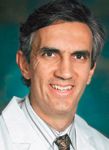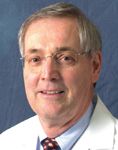Article
Instrument cleaning, reprocessing implicated in reported TASS cases
The ad hoc task force sponsored by the American Society of Cataract and Refractive Surgery (ASCRS) to investigate an increase in reported cases of toxic anterior segment syndrome (TASS) issued its final report on Sept. 25, 2006.

That document, which was distributed by the ASCRS and American Academy of Ophthalmology (AAO) to their respective members, highlights that the etiology of TASS is multifactorial and points to deficiencies in instrument cleaning and reprocessing techniques as the predominant contributor to the TASS outbreaks occurring earlier this year.

The task force was created earlier this year after Dr. Mamalis, professor of ophthalmology, Intermountain Ocular Research Center, John A. Moran Eye Center, University of Utah, Salt Lake City, and Dr. Edelhauser noted they were receiving an increasing number of queries from surgeons with patients who had developed TASS. Their fellow task force members included Walter Hellinger, MD, epidemiologist from Mayo Clinic, Jacksonville, FL; Kandon Kamae, MD, research fellow, Intermountain Ocular Research Center; Samuel Masket, MD, president of the ASCRS; and several representatives from the Centers for Disease Control and Prevention (CDC), the FDA, and the ophthalmic industry.

"The outbreak caught our attention at ASCRS and we reacted very quickly in forming a task force to investigate the etiology and solutions," Dr. Masket said. "The messages are very clear in reinforcing to surgeons that we have to be very careful about what we put inside the eye and even more careful about how we clean our reusable devices."
To gather information needed for a more thorough analysis of the outbreaks and to enable identification of contributing factors, the task force members crafted two questionnaires focusing separately on instrument reprocessing techniques and products used during surgery.
"With our interest in TASS at the Intermountain Ocular Research Center, we had previously developed a questionnaire for eliciting data," Dr. Mamalis explained. "However, it was somewhat lengthy and we felt that creating shorter questionnaires would facilitate surgeon cooperation while still providing us with the details we needed."
Newsletter
Don’t miss out—get Ophthalmology Times updates on the latest clinical advancements and expert interviews, straight to your inbox.




